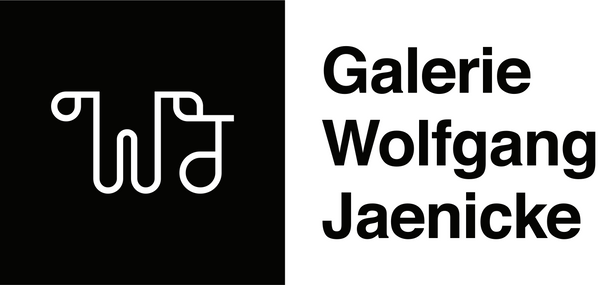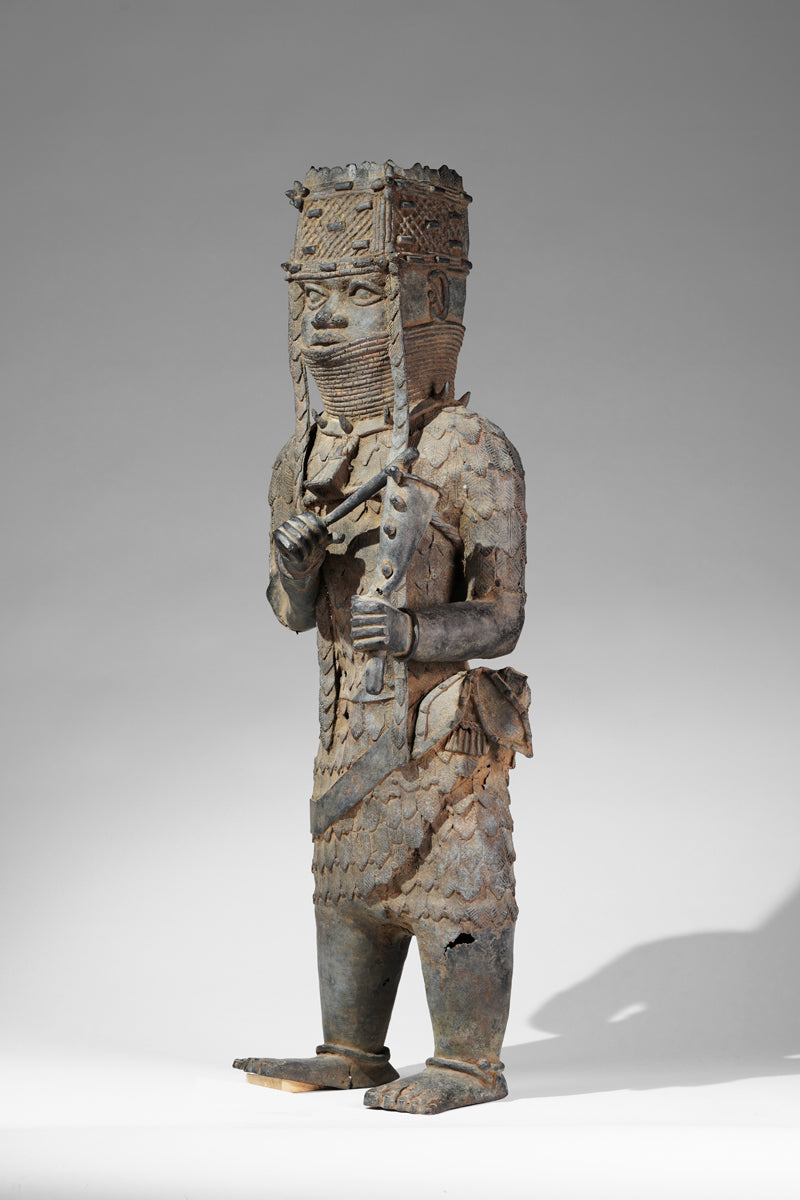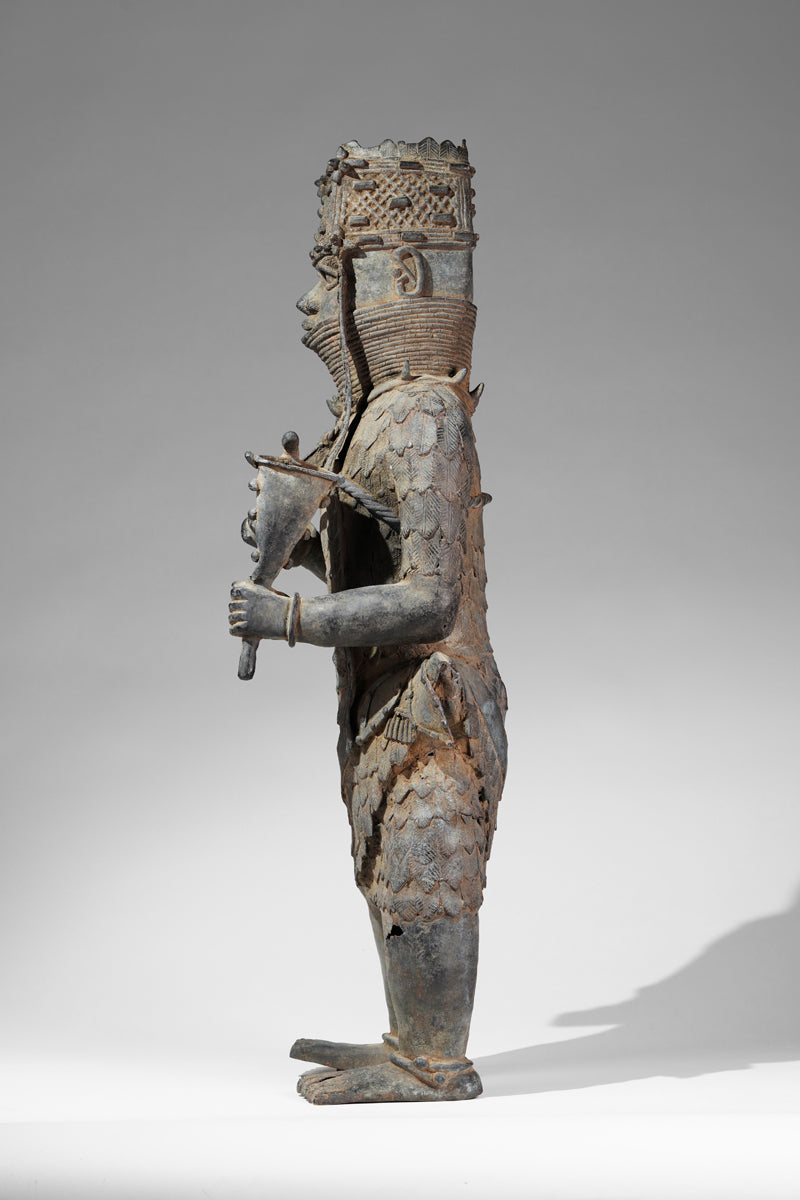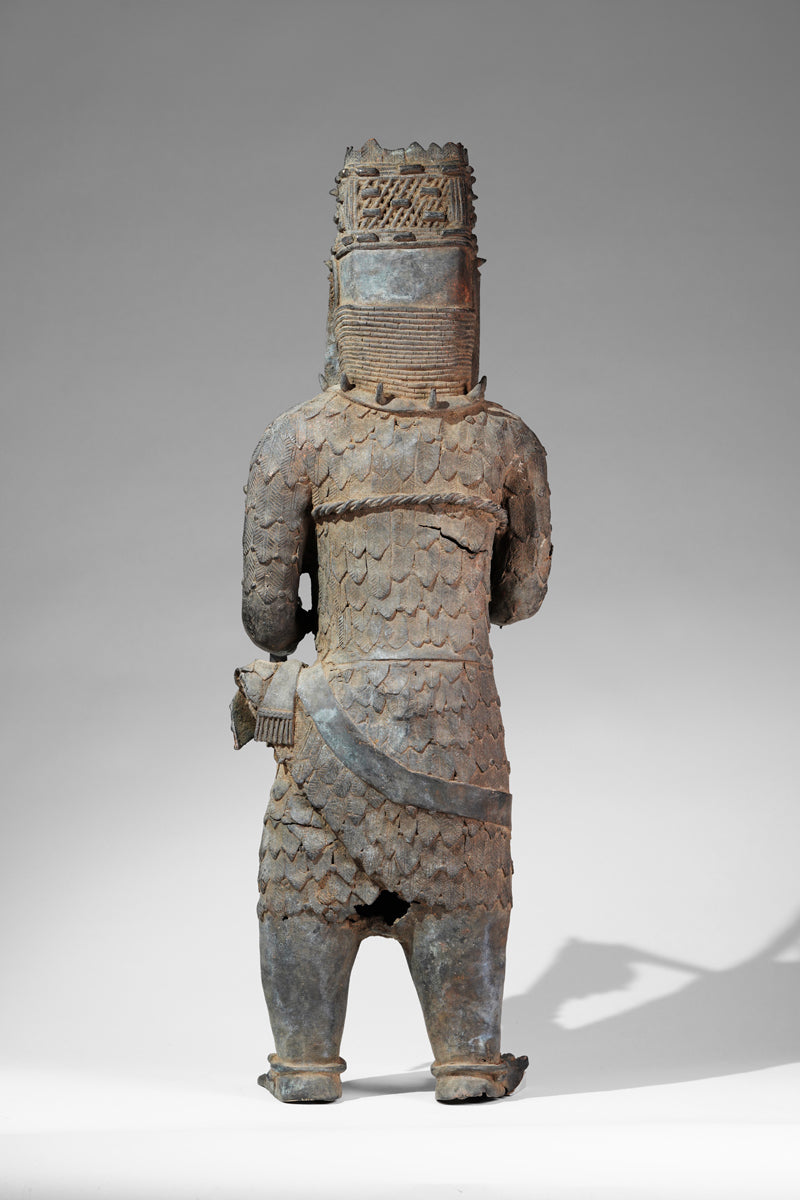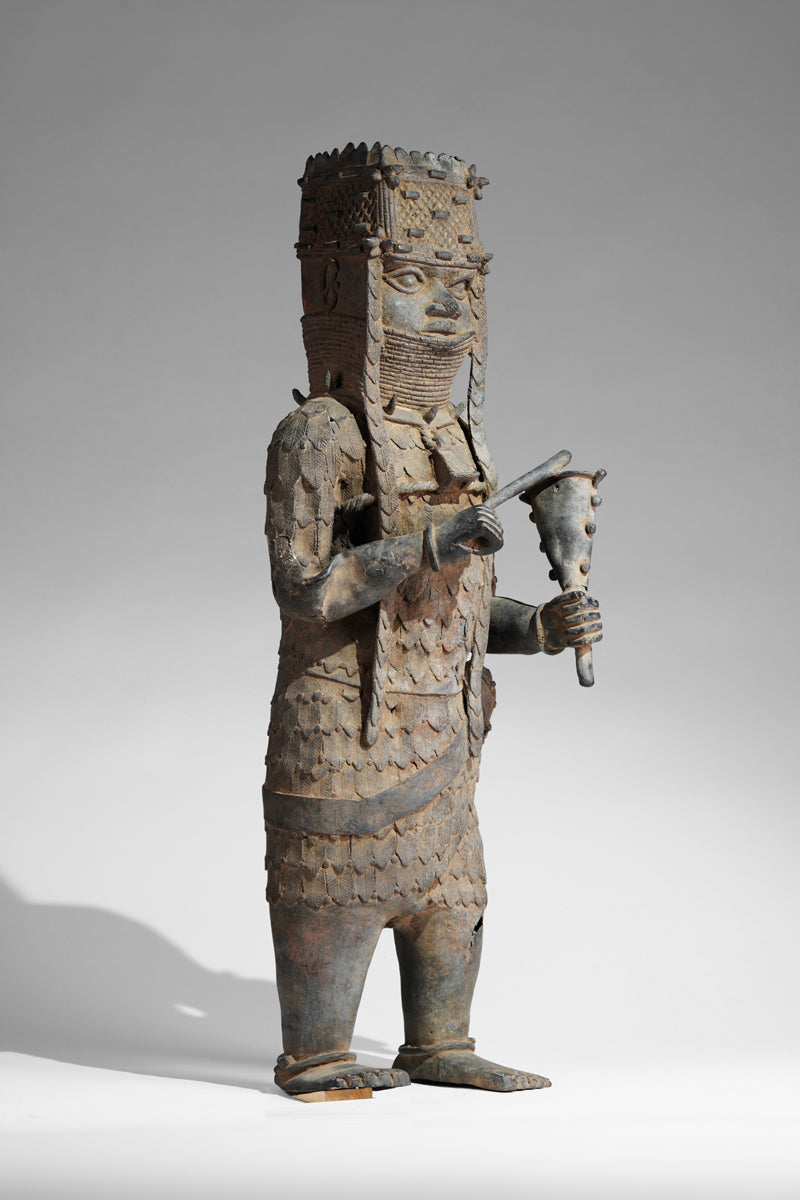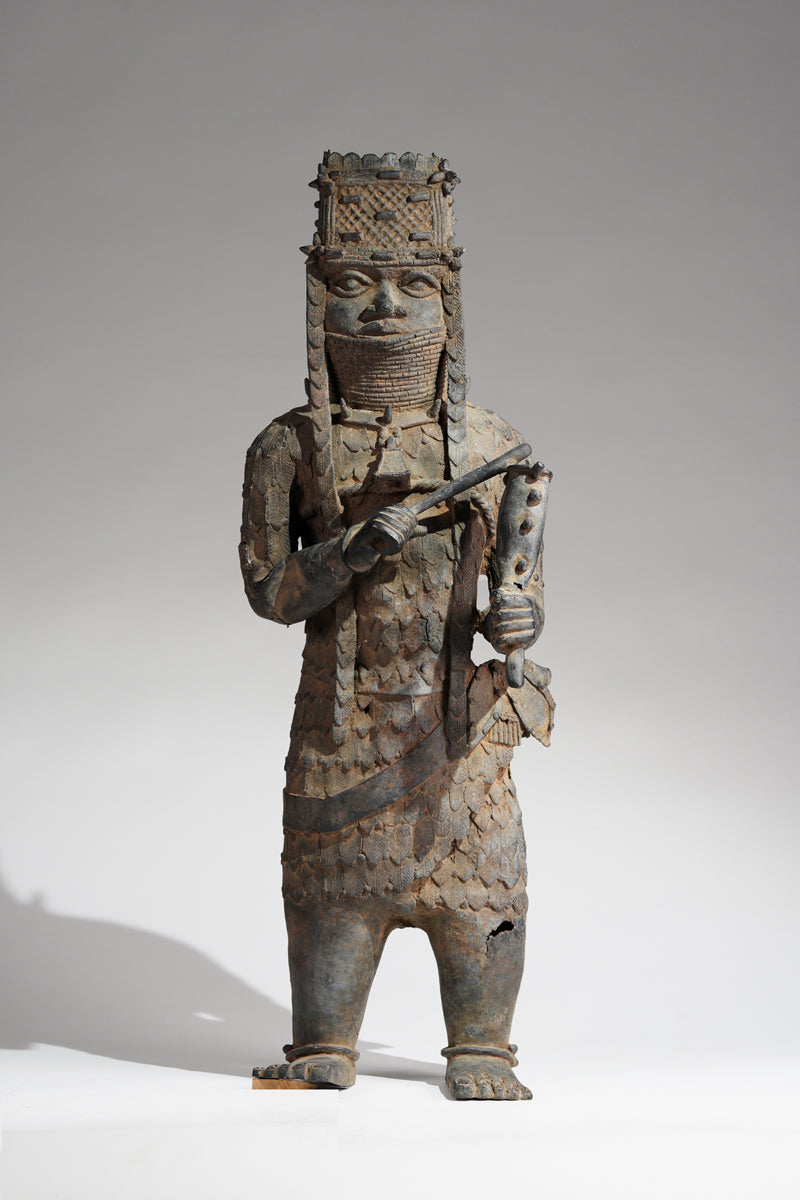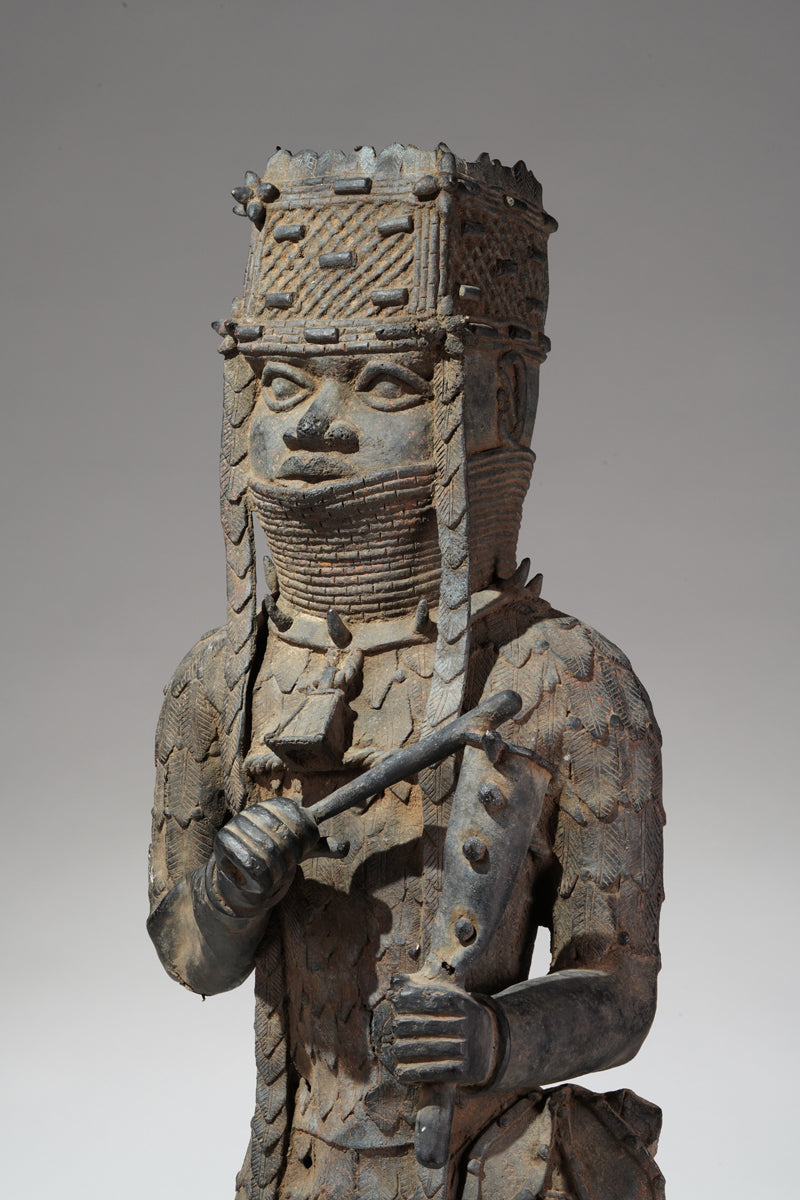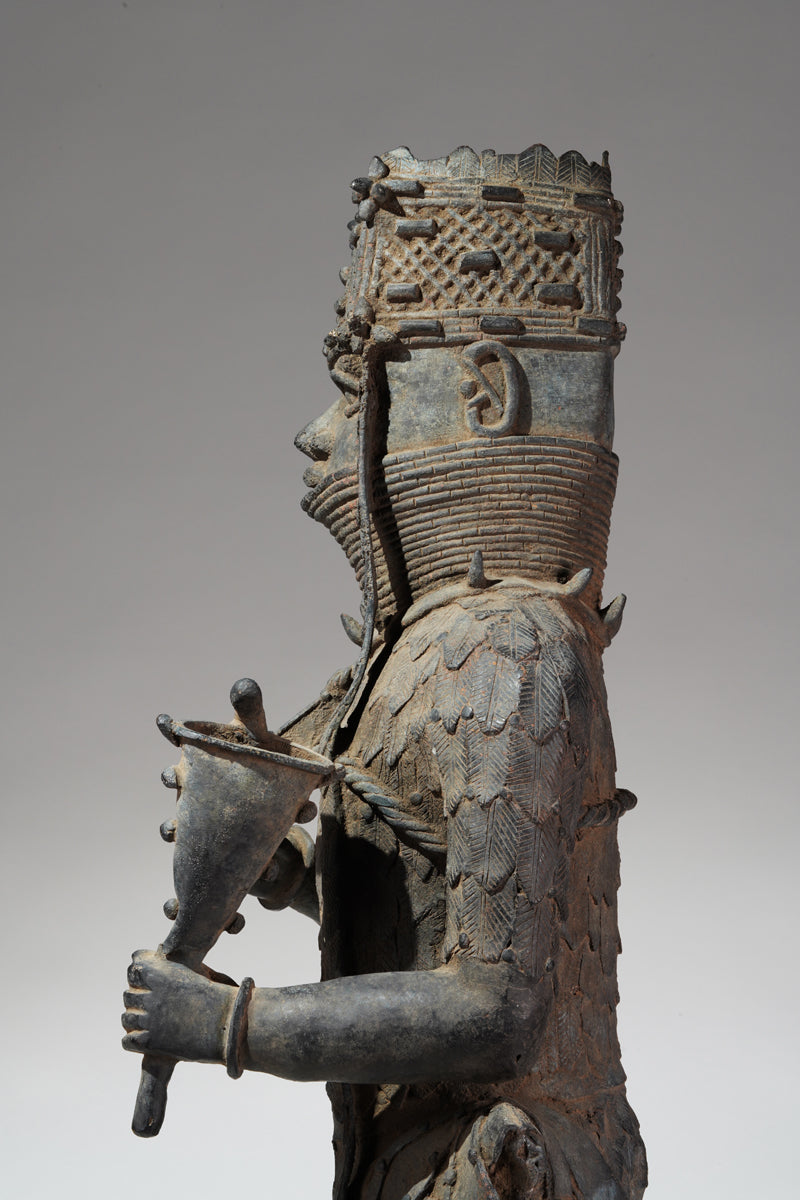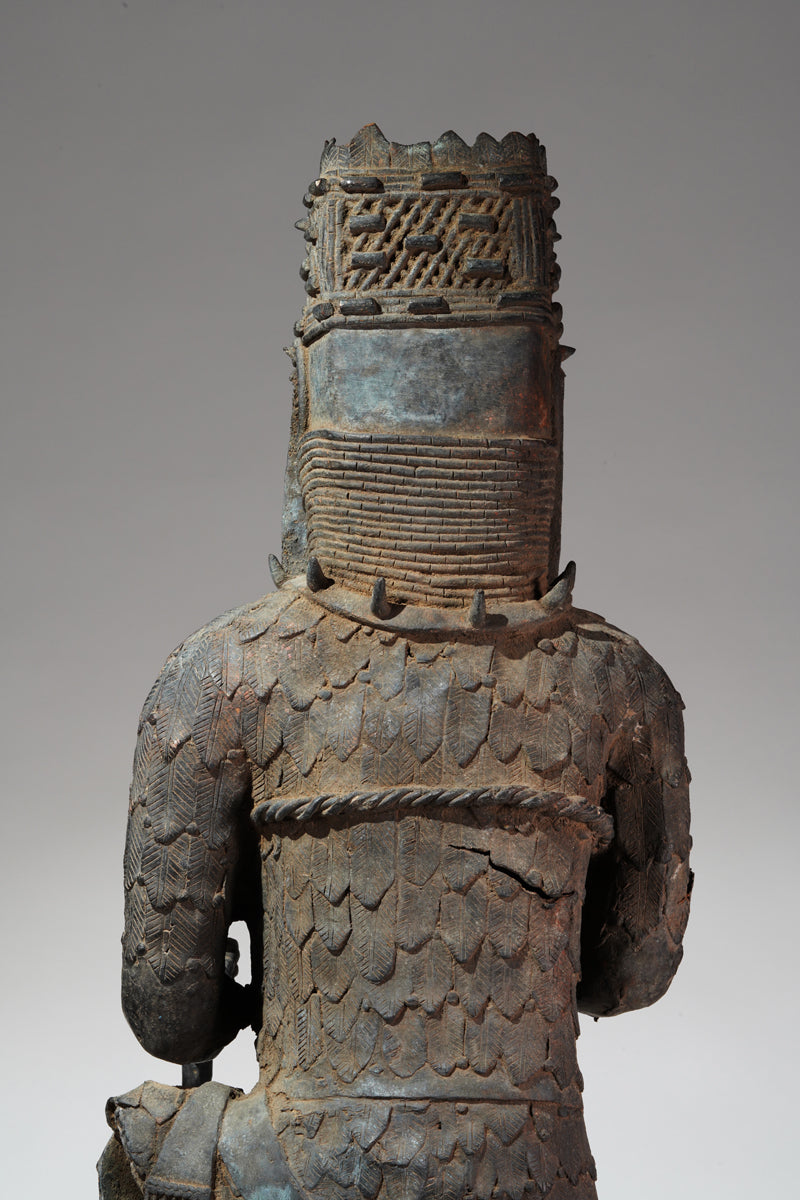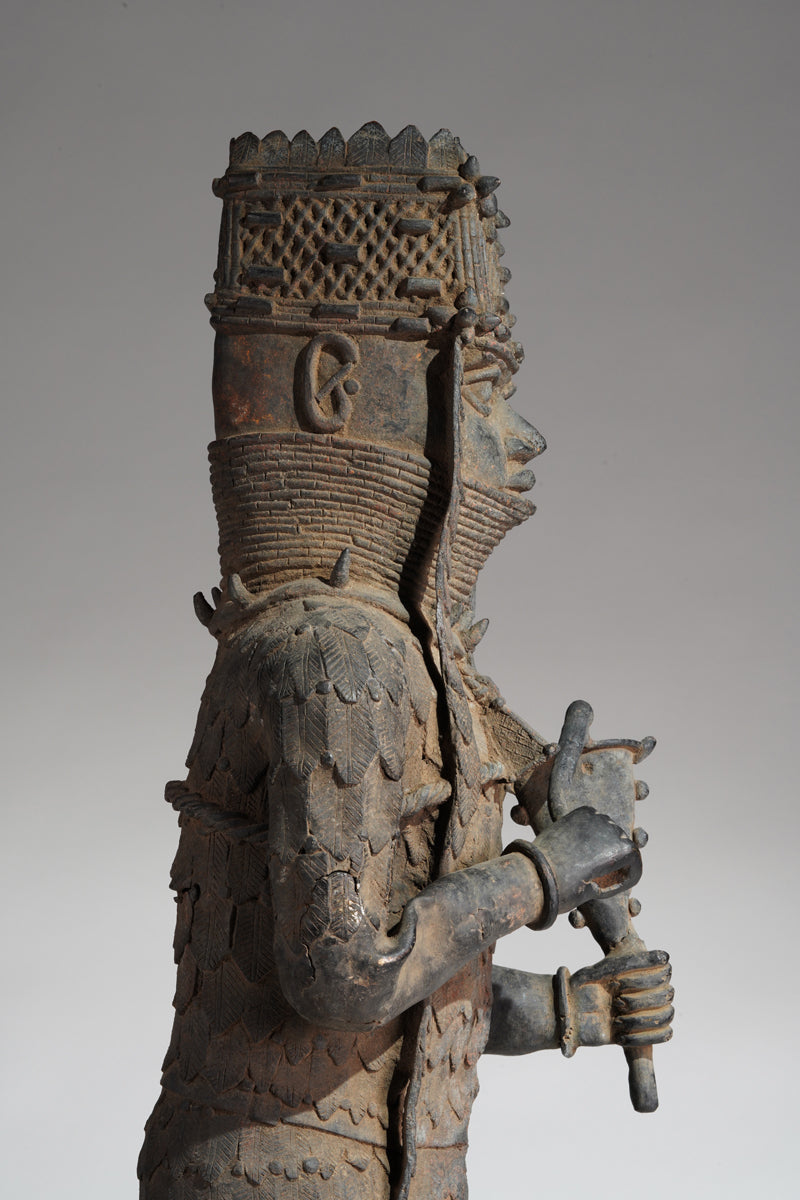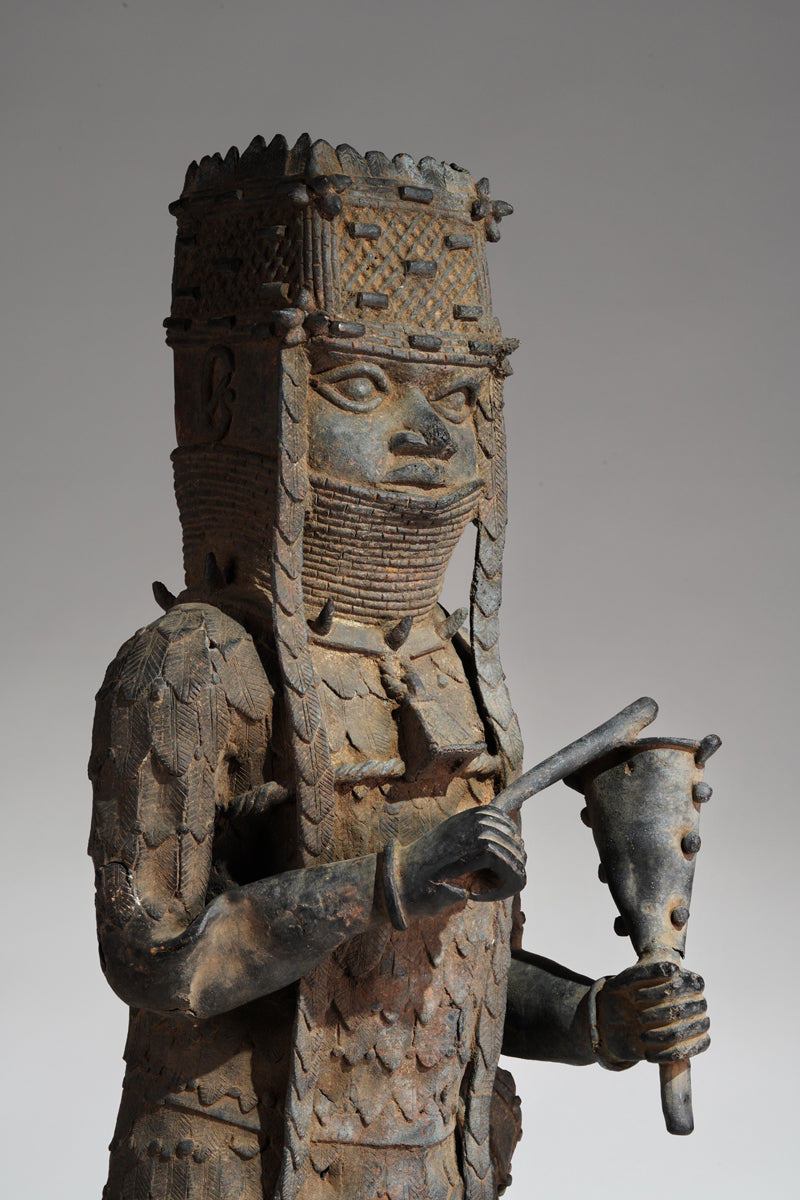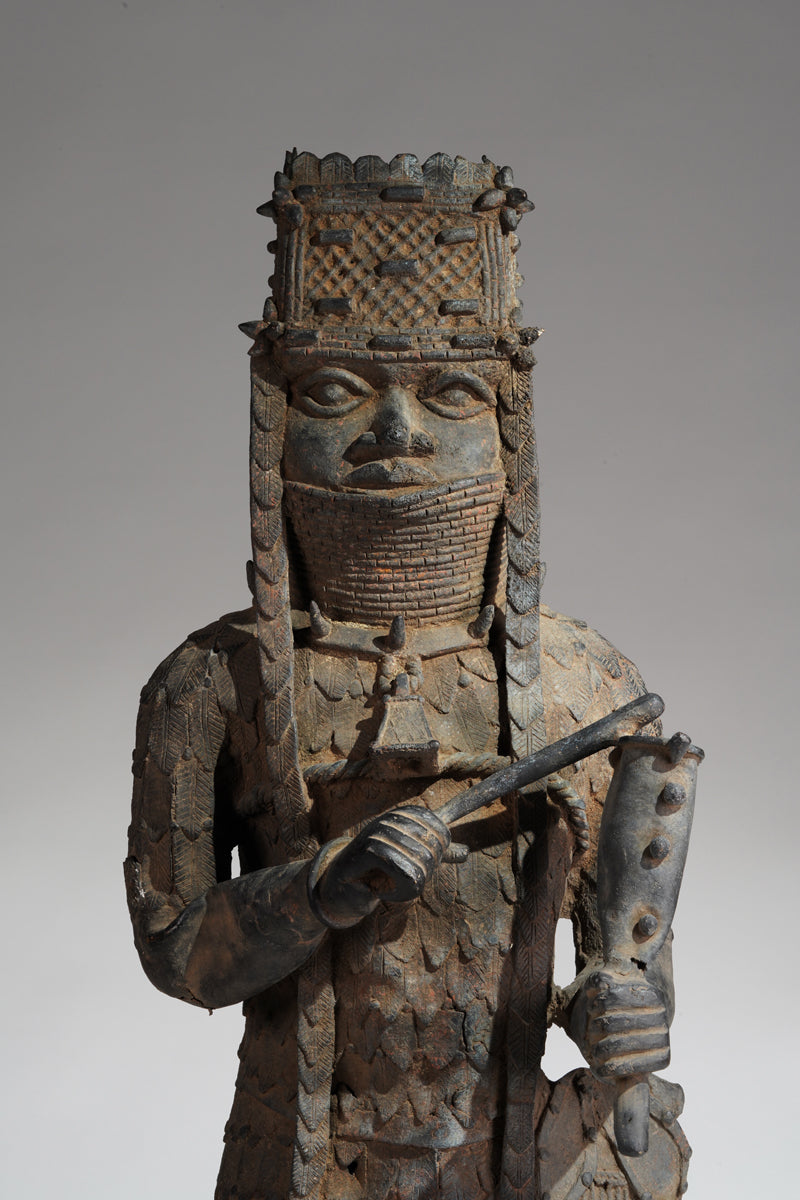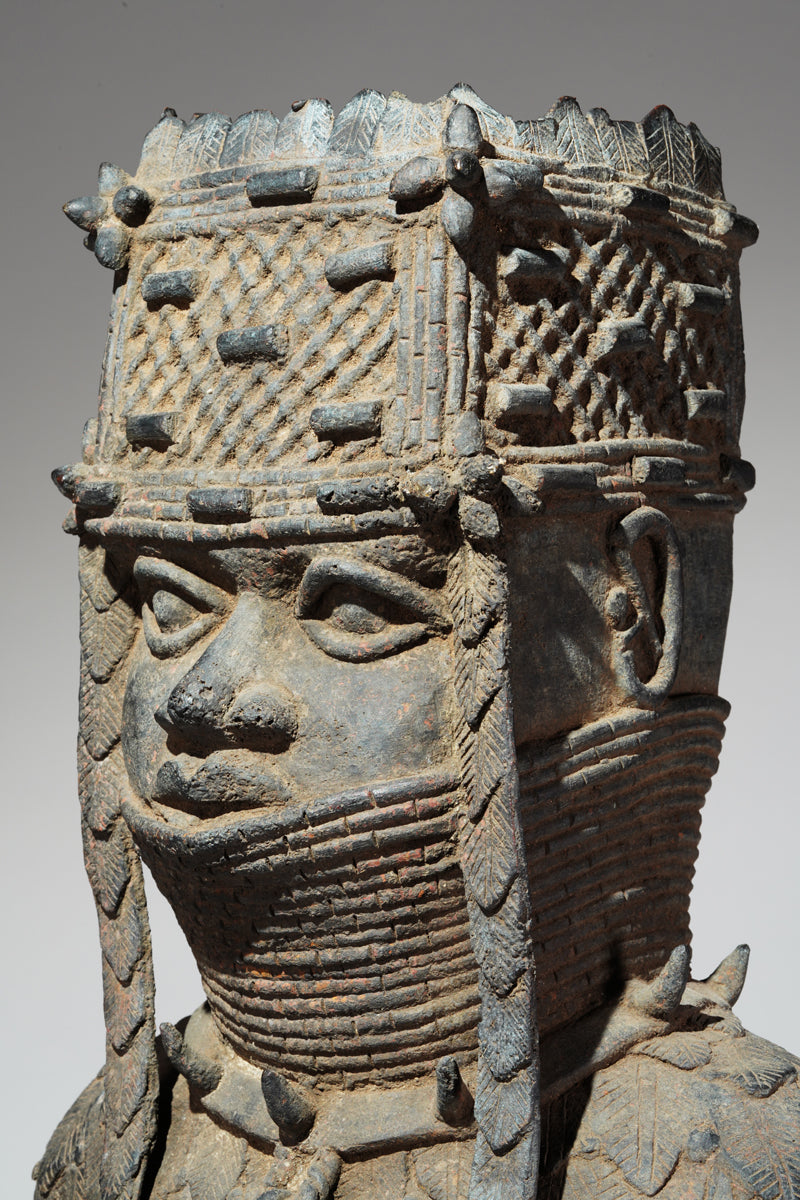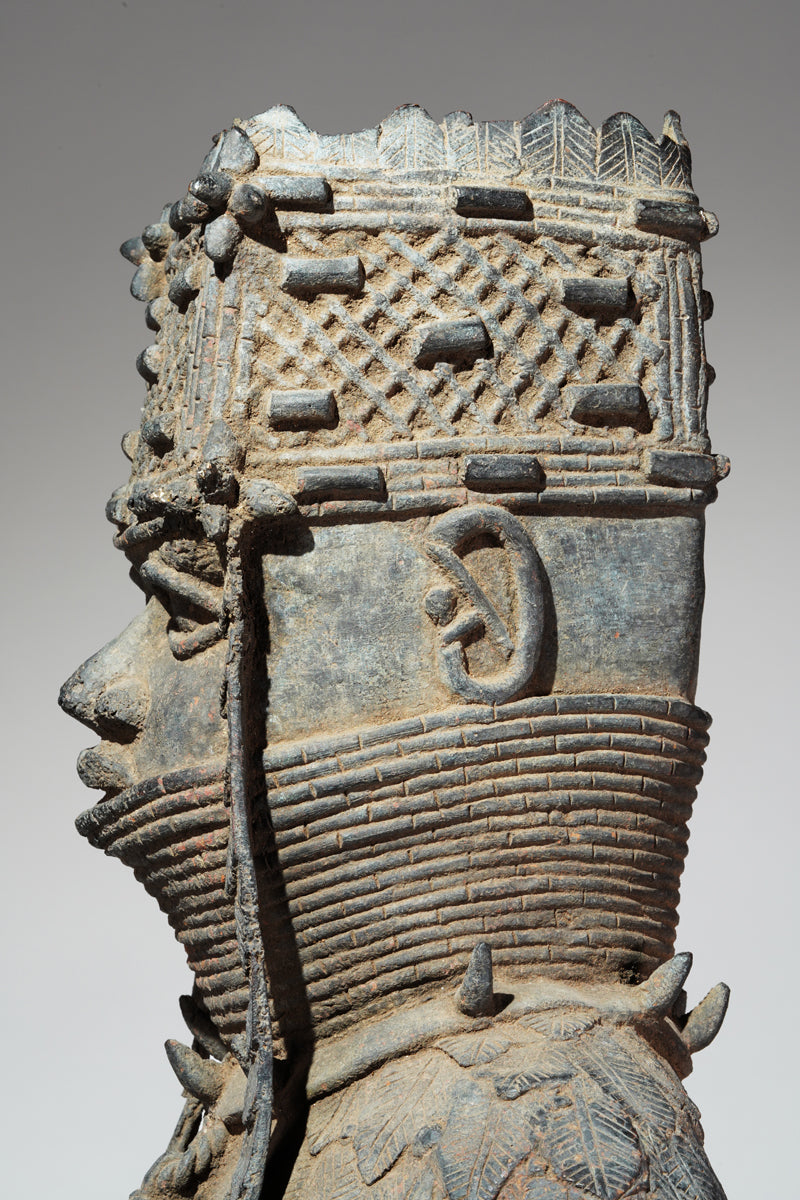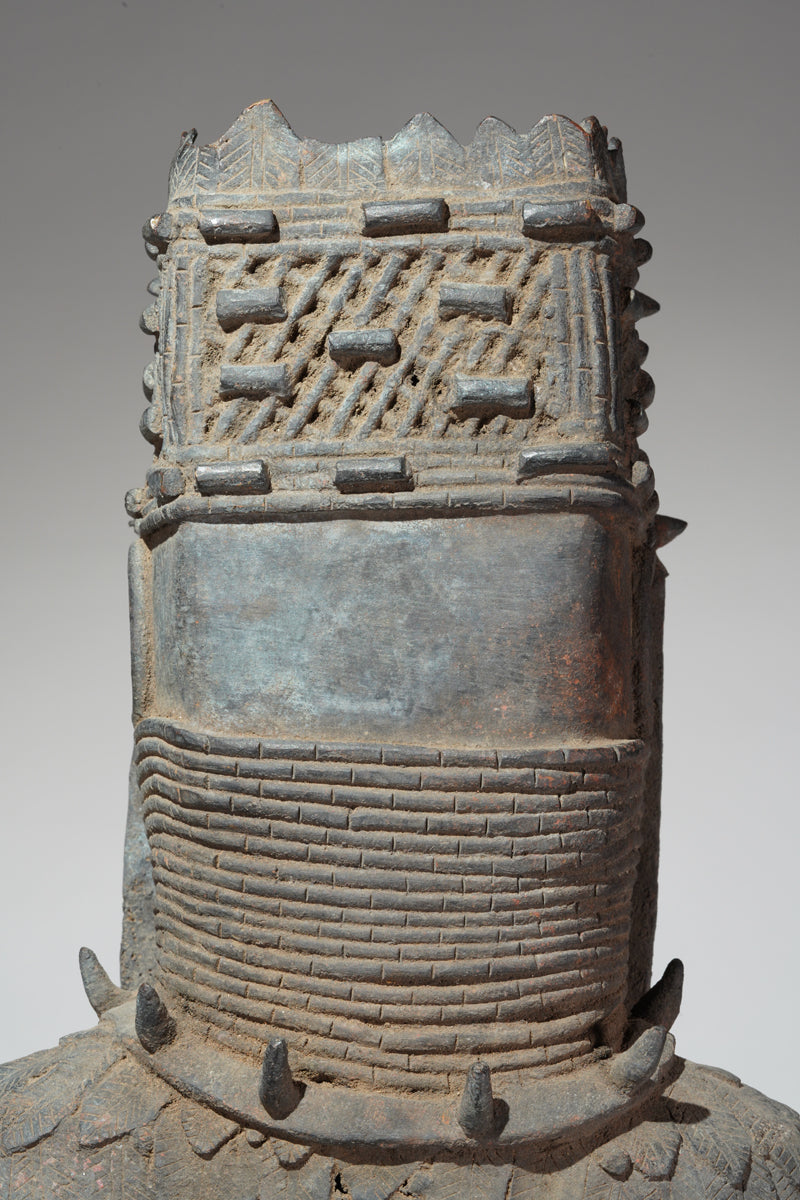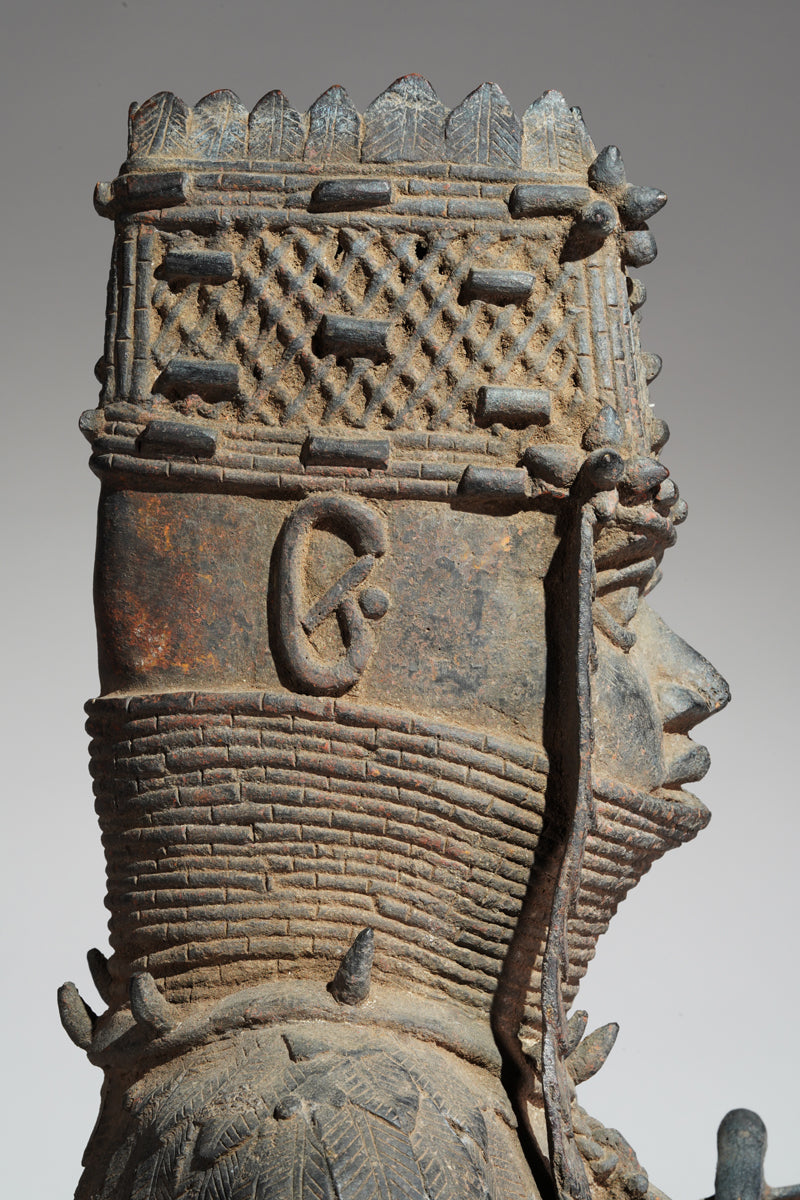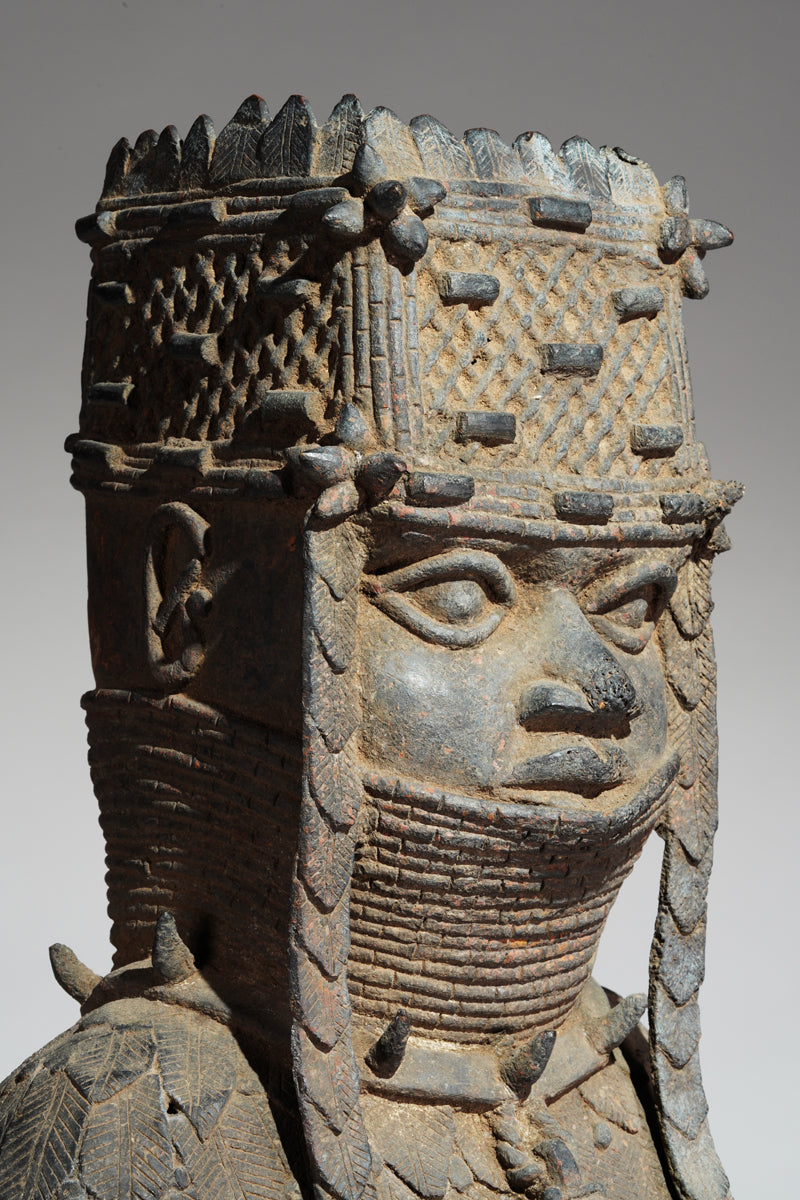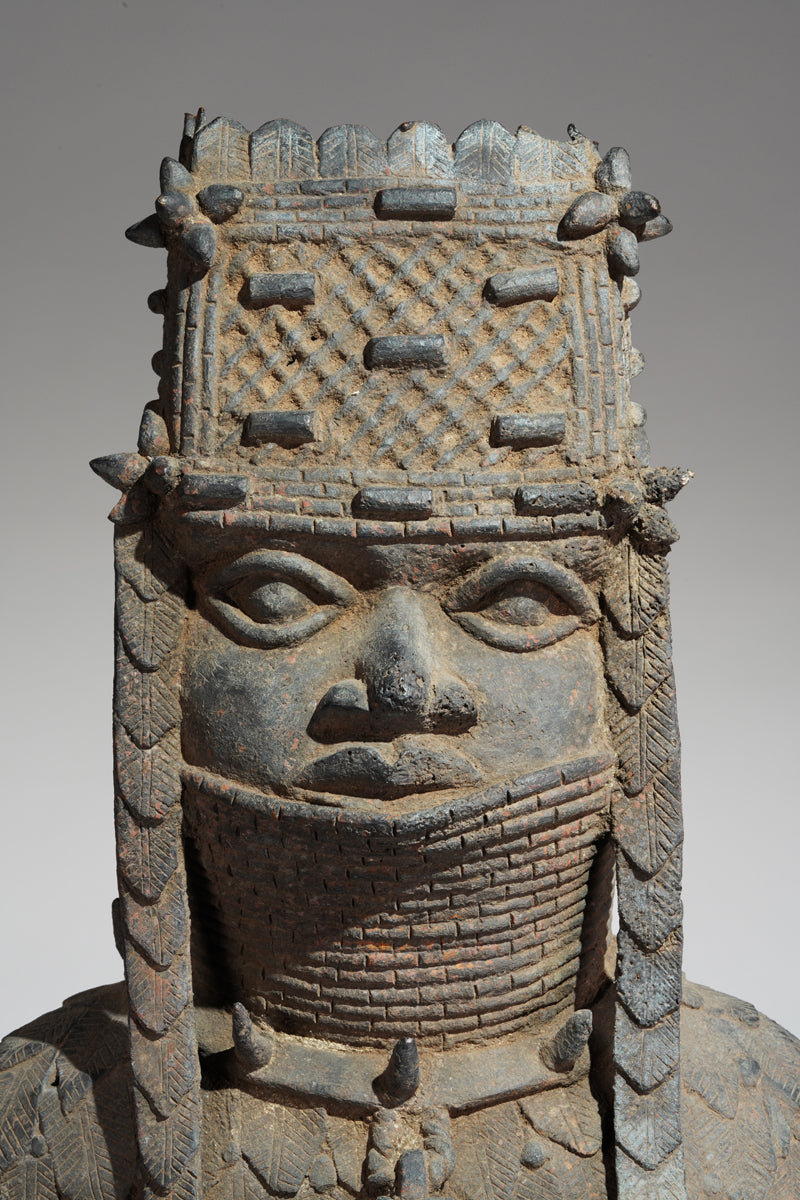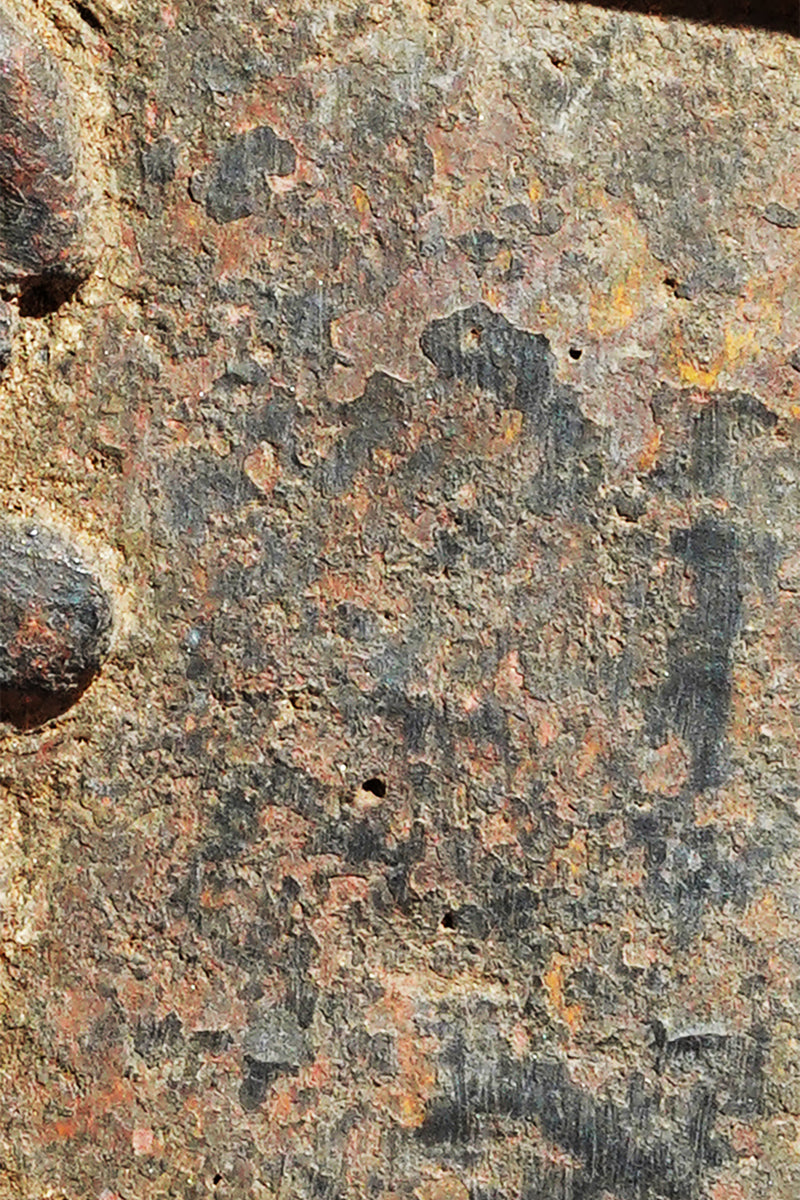wolfgang-jaenicke
A fragmentary bronze in the style of Benin
A fragmentary bronze in the style of Benin
Couldn't load pickup availability
A fragmentary bronze in the style of Benin, In the robes of an Oba, striking a gong or bell. The Oba's unusual rectangular crown suggests bronze plaques with a similar depiction of an Oba or a high-ranking figure; condition report: the left foot has a crack and bent upwards, the left arm is slightly warped and has dents. Bronzes in this size are extremly rare.
There are examples of this that we have collected in the past. Similar depictions are also documented on Digital Benin. In the robes of an Oba, striking a gong or bell. The Oba's unusual rectangular crown suggests bronze plaques with a similar depiction of an Oba or a high-ranking personality . There are examples of this that we have collected in the past. Similar depictions are also documented on Digital Benin. The scaled dress of the depicted person also appears to be typical of a particular period and style of clothing, although it is not entirely clear whether it is a feather costume or a dress made of scaled metal, as we know it from knight's armor.
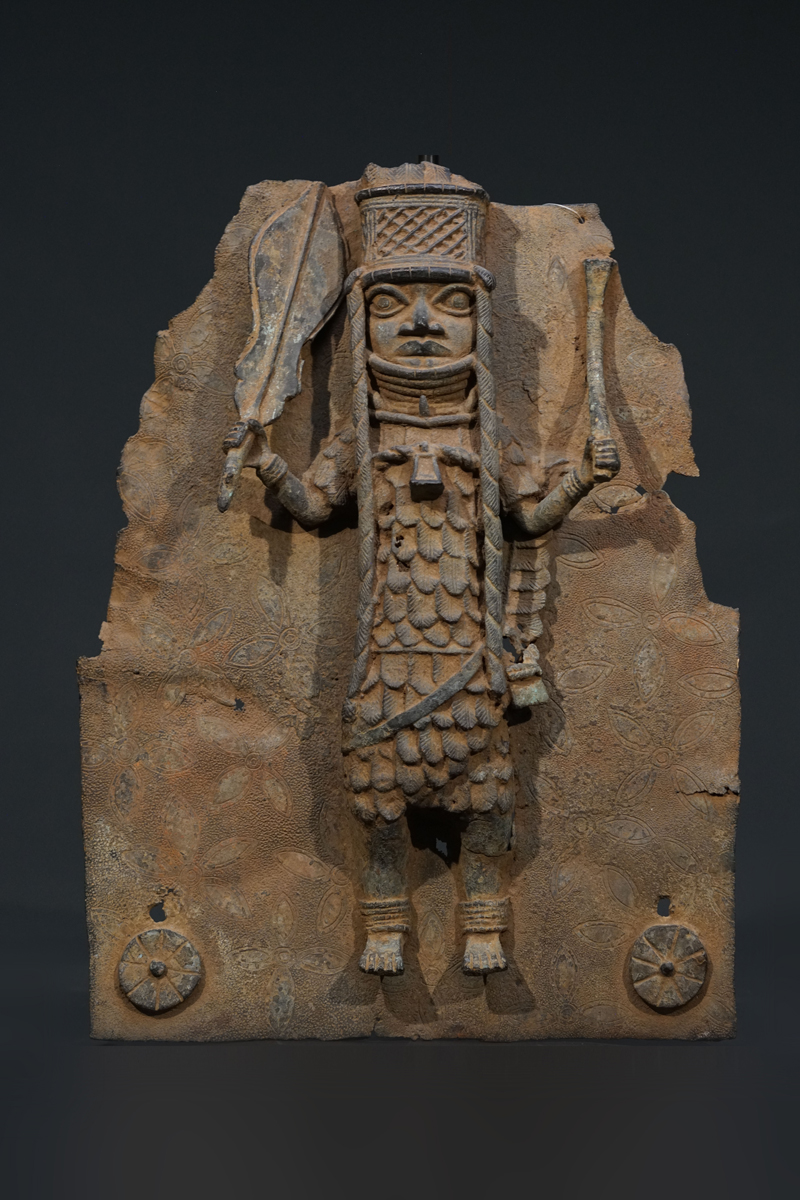
The same dress on this plaque in the style of the 17/18th century, which we collectef several years ago and were exhibited in oour Ife/ Benin exhibition 2018. Judging by the richness of detail, it is more likely to be a bronze in the style of the 17th century than that of the 18th century.
This bronze representation of an Oba or a high ranking personality is a quintessential example of court art from the Kingdom of Benin, located in present-day southern Nigeria. Created by sp of brass casters (Igun Eronmwon), this work exemplifies the high technical and artistic standards achieved by Benin artists, particularly under royal patronage.
The sculpture typically features a stylized yet regal visage with a symmetrical, dignified facial expression. The Oba or high ranking personality is depicted with idealized features—large almond-shaped eyes, high cheekbones, and a serene, unyielding gaze—reflecting divine kingship and spiritual authority. The head is often adorned with an elaborate coral bead crown (odigba) and other regalia symbolizing status, ancestry, and connection to the gods.
These heads were not mere portraits but idealized representations used in ancestral altars. The heads served ritual functions, such as offerings and libations, emphasizing continuity, memory, and legitimacy of rule.
Benin bronzes, were central to the visual culture of the Benin court.
Height: 86 cm
Weight: 18,5 kg



















